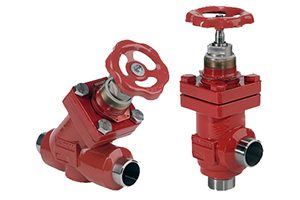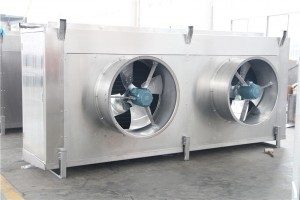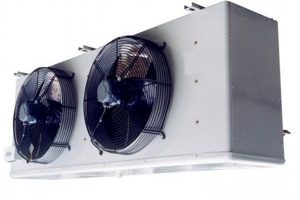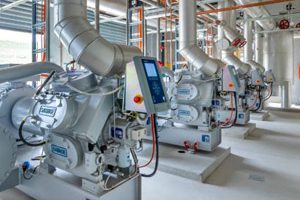Choosing Between Ammonia and Freon in Industrial Refrigeration Systems
The decision between using ammonia or Freon in the refrigeration cycle is a crucial one, fraught with its own set of advantages and disadvantages. It’s a question that often weighs heavily on the minds of those involved in constructing industrial refrigeration facilities. Unfortunately, many owners of refrigeration complexes have faced challenges in making this decision, leading to issues during system operation. This article aims to provide a comprehensive, unbiased review of the factors at play in this decision-making process. By exploring the strengths and weaknesses of both options, stakeholders can make informed choices that align with their specific needs and priorities in refrigeration system design and operation.
Properties of Ammonia Gas in Refrigeration Systems
Ammonia, with the chemical formula NH3 and refrigerant code R-717, boasts a robust presence in the refrigeration industry, making it a staple choice for most industrial refrigeration facilities. Below, we delve into some key properties of ammonia gas within refrigeration cycles.
The Odor of Ammonia Gas
One of the primary attributes of ammonia gas is its pungent odor, facilitating easy detection and prompt resolution of any system leaks. Inhalation of high concentrations of ammonia gas in the environment can lead to symptoms such as severe burning and itching of the eyes, nose, and throat, necessitating the use of masks with three-mode filters in affected areas. Prolonged exposure to high concentrations of this gas can result in respiratory issues. For further guidance, please refer to the ammonia first aid instructions.
Ammonia Gas Price Comparison
Ammonia gas is considerably more cost-effective compared to freon gas. Moreover, detecting leaks in ammonia systems is typically easier due to the distinctive odor it emits, facilitating quicker repairs and reducing the need for frequent recharges. It’s important to highlight that the cost of one kilogram of freon gas is nearly 30 times higher than that of ammonia gas.
Environmental Impact of Ammonia Gas
Ammonia gas, being lighter than air, naturally ascends within a space. It is inherently non-flammable and non-combustible under regular conditions, except at elevated temperatures and concentrations. Ammonia is environmentally safe and does not contribute to ozone layer depletion or global warming. However, it’s crucial to note that uncontrolled release of ammonia gas into the environment can lead to significant harm to vegetation and trees in the vicinity. Proper handling and containment are essential to mitigate any potential environmental risks associated with ammonia gas.
Thermodynamic Properties of Ammonia Gas
Ammonia gas boasts superior thermodynamic properties compared to freons, presenting a notable advantage. In equal conditions, ammonia exhibits a significantly higher specific heat property than freon, resulting in a potential reduction of electricity costs by up to 20% when using this refrigerant. Additionally, the broader temperature range achievable with ammonia further enhances its appeal over freon, making it a favorable choice for various refrigeration applications.
Advantages and Disadvantages of Freon Family Refrigerants | Ammonia or Freon
Exploring the distinct characteristics of Freon family refrigerants versus ammonia allows for a comprehensive understanding of their advantages and disadvantages. This comparison facilitates informed decision-making regarding the choice between ammonia and Freon refrigerants in various applications. Understanding the unique properties, environmental impacts, efficiency, and safety considerations of each refrigerant type is crucial for optimizing refrigeration systems while mitigating potential drawbacks.
Simple System and Management of Freon Systems
Halocarbon gases, commonly known as freons, are often employed in simpler refrigeration systems, necessitating fewer safety precautions. In freon-based cold storage facilities, operator intervention and routine maintenance are typically minimal, with the system operating semi-automatically. This streamlined operation is widely regarded as a significant advantage, particularly in commercial-scale freon systems where simplicity and efficiency are paramount.
Freon: Odorless and Costly
Freon, a member of the halocarbon family, is nearly odorless, making it challenging to detect leaks until significant gas loss occurs. The absence of a distinctive odor increases the risk of complete gas discharge from the system, resulting in substantial costs for owners.
Environmental Impact of the Freon Family
The Freon gas family encompasses various types categorized by their environmental effects. Older gases like R-11, R-12, and R-22 significantly contribute to ozone layer depletion and global warming. In contrast, newer gases such as R-404A and R-134A pose relatively less harm to the ozone layer. Despite advancements, the colorless and odorless nature of freons complicates leak detection, exacerbating their environmental impact compared to ammonia. Thus, while newer freons are less harmful, the environmental damage caused by this refrigerant family remains a concern.
Additional Properties of Freons
Freon refrigerants demonstrate compatibility with copper, a commonly used material in heat exchanger fabrication. Furthermore, the use of freons allows for the utilization of semi-hermetic compressors, as these refrigerants do not react with the copper coils of the electromotor. However, it’s worth noting that semi-hermetic compressors have a relatively shorter lifespan compared to open compressors, which is a potential drawback despite the benefits of using freons.
Conclusion on Ammonia or Freon
In conclusion, when considering the technical and financial aspects, Freon refrigerants find their justification in commercial and air conditioning units, and in certain semi-industrial settings. However, when it comes to industrial applications, the use of ammonia refrigerants stands out as both technically and financially justified. Ammonia offers superior thermodynamic properties, cost-effectiveness, and environmental friendliness compared to Freon, making it the preferred choice for industrial refrigeration systems. Its effectiveness in large-scale industrial units makes it a highly viable option for those seeking efficient and sustainable refrigeration solutions
Related posts
Ammonia Or Freon
What Is Ammonia Screw Compressor? An ammonia screw compressor is a type of compressor used in industrial refrigeration systems to
Introduction to Ammonia Refrigeration Systems – Properties, Applications, and Equipment Overview Ammonia, with the chemical formula NH3 and the refrigerant





